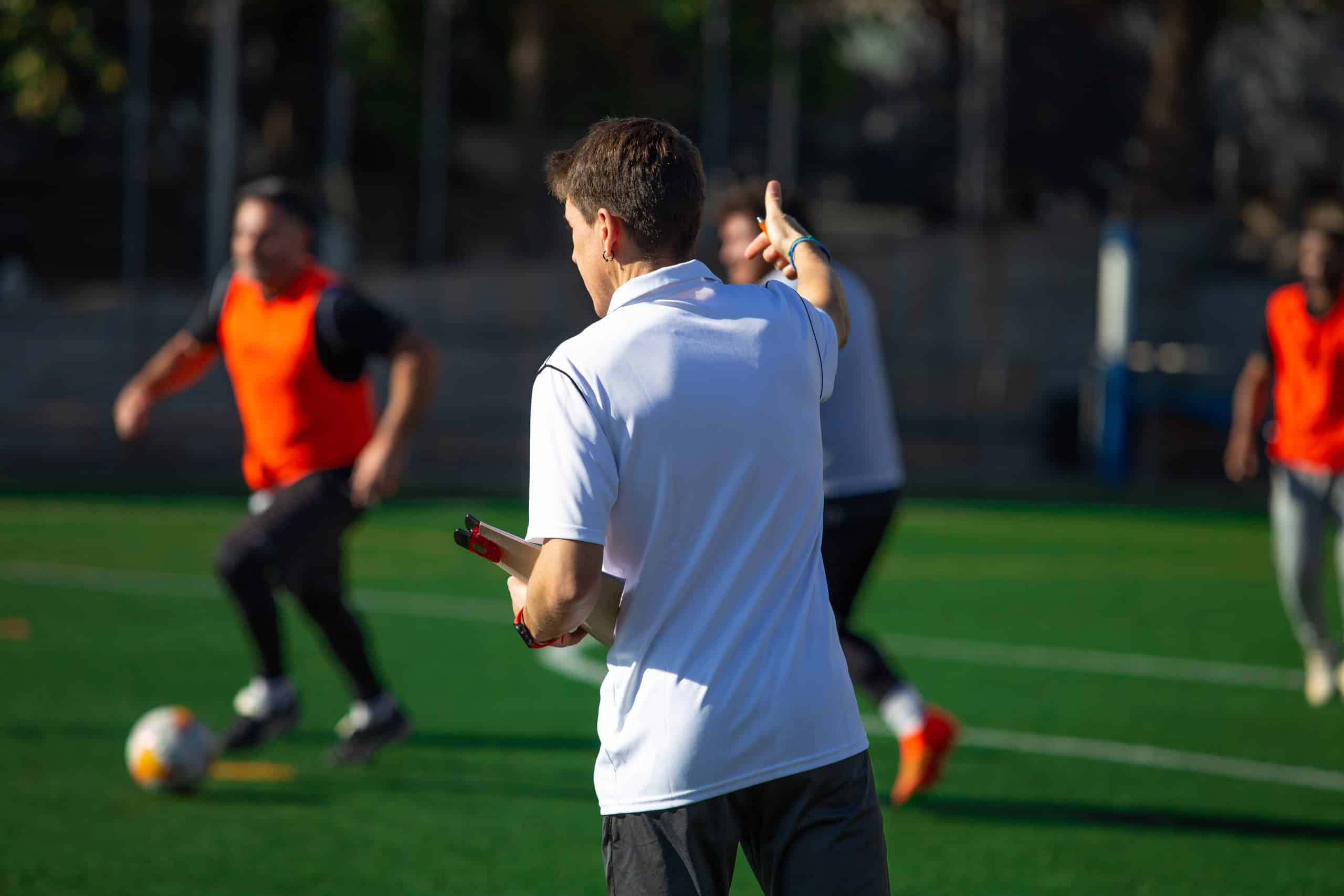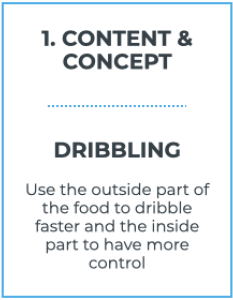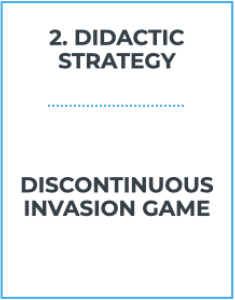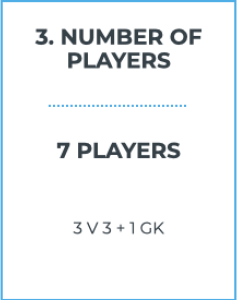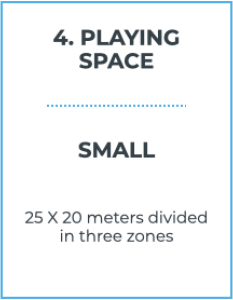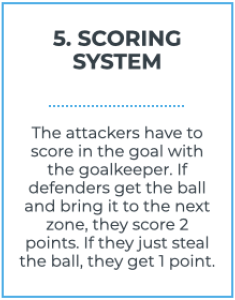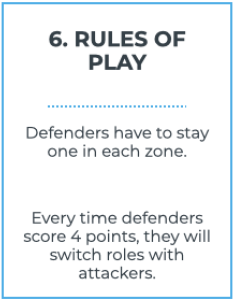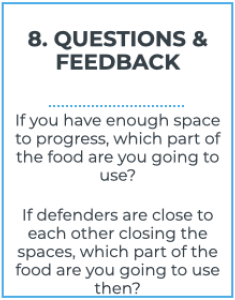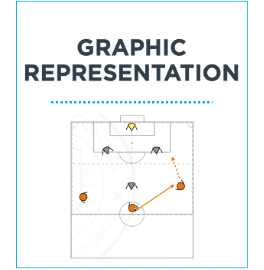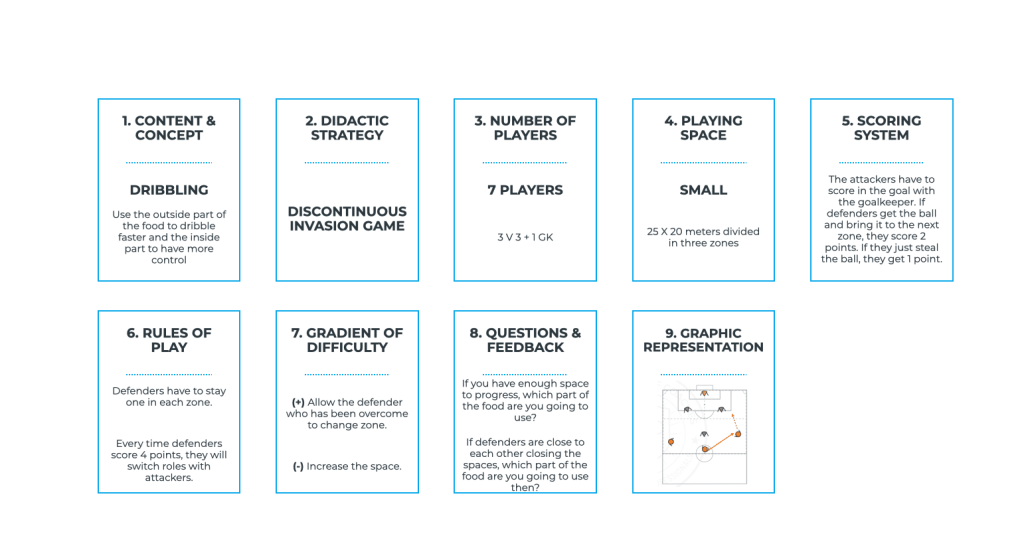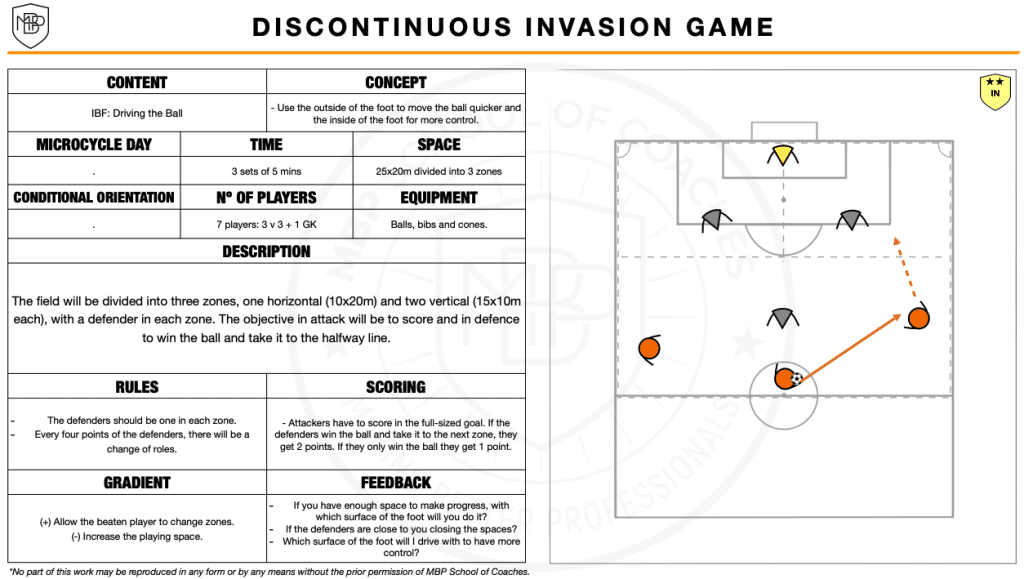The preparation of a training task in football is a crucial part of player development. To achieve effective results and to ensure that all necessary aspects are addressed, it is essential to follow a well-structured process.
In this article, we will present the 9 essential steps that every football coach should follow when designing a training task. They will not only help you to define the objectives to be achieved during the task and the training, but also provide you with the necessary tools to create an optimal learning environment for the players.
-
Selection of the content & concept
First of all, we must define what we want to train. Without a roadmap to follow, it will be very difficult to train what we want. The content and concepts will vary depending on the phase of the session. For example, in the activation phase we can focus on coordination aspects, while in the main phase we will focus on tactical aspects of the game.
-
Selection of the didactic strategy
We will select the task format that we want to use to train the previously selected content and concepts. This will vary according to the type of content and the phase of the session and can range from a coordination circuit (analytical format) to a real conditioned game (global format).
-
Determining the number of participants
We need to decide how many players we need to carry out the task, including goalkeepers and neutrals if necessary. Obviously, this number will vary according to the level of understanding and development of the players and may be higher depending on their cognitive level.
-
Defining the playing space
This refers to the space we are going to use for the task. Remember that this can be divided into smaller sub-spaces, which will serve to establish certain internal rules that favour the creation of more specific situations.
-
Establishing the scoring system
It is very important to establish a way of scoring for each team that helps their motivation to achieve the objective. In that sense, the scoring may vary according to the content trained and the format of the task, whereby points can be scored by scoring on goal, through small goals, reaching a scoring zone, completing a specific number of passes, etc.
-
Defining the rules of play
In order for the playing situations to be oriented towards the main content and concept, it will be necessary to introduce some rules that oblige players to adopt certain required behaviours. It will be important that these rules do not overly condition the main role of the task, i.e. the one that supports the main content and concept, as it is important that the players act as naturally as possible.
-
Adjust the gradient of difficulty
Although it will not always be necessary to apply it, we should define some settings prior to the task in case we need to modify its level of difficulty. To do this, we will increase the gradient if we see that the task is too easy for the main role and decrease it if it is not. If the task works well, it may not be necessary to modify its difficulty.
-
Formulate questions around the main content
When taking into account the main content and concept of the session, we should ask questions to the players with the intention of stimulating their cognitive structure during the task. The answer to these questions should be the task itself, so we should be clear about what the task answers are: why, what, when, where or how.
-
Graphic representation
As we complete the eight sections listed, we will draw the diagram of the task as we imagine it. It is important that the image closely represents what we want so that we can be as accurate as possible when we set it up on the training pitch.
The aim of these 9 steps is to help us to design better training tasks and, above all, to include the most important elements in them. From here, it is up to the creativity of each coach to design more engaging tasks for the players.
Example of the use of the 9 steps to create training drills. Source: MBP
Task completed after having followed the 9 steps for its design. Source: MBP
Would you like to improve the design of your training tasks?
In the Online Expert in Youth Football course, you will learn to identify the main characteristics in youth players and to classify them according to their level of game understanding. All this will allow you to select the most appropriate training content according to their needs and, consequently, learn how to design training sessions and tasks that respect and favour their learning processes in order to, over time, help develop better players.

